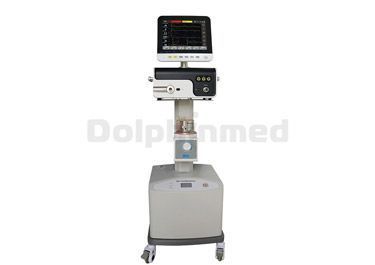The advantages of Infant ICU Ventilator
Severe respiratory failure in neonates is a common complication in preterm infants, mainly due to the increasing number of people who choose cesarean section in recent years, coupled with the impact of life and environment, so that some organs in premature babies are not fully developed. The Infant ICU Ventilator is a new type of synchrony that focuses on respiratory failure in infants. Compared with the constant frequency ventilator, it has higher regulation, higher frequency amplitude, and smaller tidal volume, so it is more suitable for the airway and lung of the baby. Instant care is available in hospitals with relatively good medical conditions. However, if the Pediatric ICU Ventilator is not sound in a basic hospital with poor medical conditions, this situation often requires transfer treatment. There is a well-established system for the transfer of newborns in general hospitals. The application of baby ventilators can better help patients with better breathing support during transit. The previously used ICU Respirator has been widely used because it is easy to carry and economical, but it cannot be applied to newborns in special situations because of the complicated condition of the child and the operator. The appearance of the baby ventilator is different from the emergency ventilator used by ordinary adults. For newborns who need ventilator support, breathing safety can be ensured to the maximum extent and the safety factor during transit can be improved.
Timely mechanical assisted ventilation to improve blood oxygen concentration in children is one of the important means to improve respiratory failure and reduce sequelae. The high-frequency oscillating ventilator is a new favorite in clinical practice, which makes up for the shortcomings of high-frequency tidal volume and low gas exchange efficiency in constant frequency mechanical ventilation. Its clinical efficacy has been widely recognized at home and abroad.
Infant ICU Ventilator
The results confirmed that the baby ventilator not only ensures the desired therapeutic effect but also reduces the damage to the child, avoids the risk of reperfusion, and significantly improves the prognosis level and quality of the child. The results show that HFV, as a new type of mechanical ventilation, uses a constant MAP instrument support during ventilation, which significantly improves alveolar vitality, alleviates the serious phenomenon of alveolar atrophy accelerates the opening of alveoli and increases the amount of alveolar concentration in the whole body. Significantly improved the respiratory rate of the child and improved the blood gas index of the child. And the equipment exchanged under the minimum airway pressure can reduce the damage to the cardiovascular system, promote the rational distribution of gas in the lungs, and increase the oxygenation level. Therefore, the baby's ventilator can adjust the alveolar capacity, adjust the airway pressure, ensure the patient's cycle pressure of one breath, and maintain balance. Thereby effectively reducing the repeated opening and closing of the alveoli, the diastolic and systolic pressures of the child gradually return to normal, and the respiratory rate is more and more balanced; the rational opening and closing of the alveoli reduces the tension of the lungs and avoids the alveolar capillaries Leakage, the release rate of pulmonary surfactant is released. The practice has shown that HFV is currently the most widely used mechanical ventilation treatment in clinical practice, and can achieve the desired clinical results. Under the aid of this means, it can help the child to resume spontaneous breathing, reduce the retention of gas, improve the activity of the alveoli, the alveoli will not shrink due to hyperinflation, and can reduce the retention of carbon dioxide in the lungs.






 English
English  French
French  Chinese
Chinese  Spanish
Spanish 















